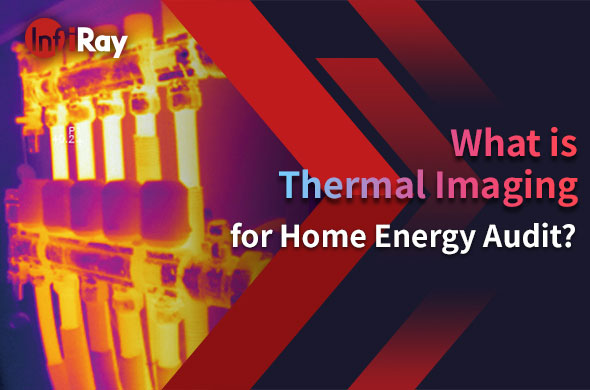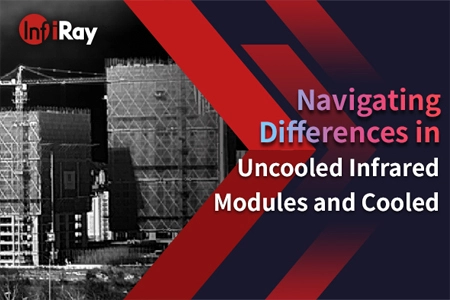Security Guardian: The Role of Thermal Camera on Gas Leakage

Gas leaks pose significant risks to both life and property, making early detection crucial for safety. Gas leaks are not just minor inconveniences; they can lead to catastrophic consequences if left undetected. Traditional methods of gas leak detection often fall short in providing timely alerts. This is where thermal cameras step in as powerful tools in safeguarding against potential disasters.
Understanding Thermal Cameras
Explanation of Thermal Imaging Technology
Thermal cameras utilize infrared technology to detect heat signatures emitted by objects. Unlike visible light cameras, thermal cameras can capture images even in low-light or adverse weather conditions, making them ideal for detecting gas leaks in various environments.
How Thermal Cameras Detect Gas Leaks
Gas leaks often result in temperature differentials between the leaking gas and its surroundings. Thermal cameras can detect these temperature variations, even in instances where the gas is invisible to the naked eye. This capability allows for early detection of potential leaks before they escalate into hazardous situations.
Advantages of Thermal Cameras Over Traditional Methods
Compared to traditional methods such as manual inspections or gas sensors, thermal cameras offer several advantages. They provide real-time monitoring, high sensitivity, and the ability to cover large areas efficiently, making them indispensable tools for gas leak detection in diverse settings.

The Significance of Early Detection
Risks Associated with Undetected Gas Leaks
Undetected gas leaks pose numerous risks, including fire hazards, explosions, and health hazards due to exposure to toxic gases. Timely detection can mitigate these risks and prevent potential disasters.
Importance of Early Warning Systems
Early warning systems are crucial for ensuring prompt responses to gas leaks. Thermal cameras serve as integral components of these systems, offering continuous monitoring and immediate alerts when temperature anomalies indicative of gas leaks are detected.
Role of Thermal Cameras in Providing Early Detection
Thermal cameras excel in providing early detection of gas leaks by swiftly identifying temperature variations associated with escaping gases. This early detection enables timely interventions, minimizing the potential impact of gas leaks on safety and property.

Features and Capabilities of Thermal Cameras
High Sensitivity and Accuracy
Thermal cameras boast high sensitivity and accuracy, allowing them to detect even minor temperature variations caused by gas leaks. This ensures reliable and precise detection, reducing the likelihood of false alarms and enhancing overall safety.
Real-Time Monitoring Capabilities
One of the key advantages of thermal cameras is their ability to provide real-time monitoring of gas leak-prone areas. This continuous surveillance enables proactive measures to be taken promptly, preventing potential accidents and ensuring uninterrupted operations.
Integration with Other Security Systems
Thermal cameras can be seamlessly integrated with existing security systems, enhancing their effectiveness in detecting and responding to gas leaks. This integration allows for centralized monitoring and streamlined management of security protocols, optimizing safety measures.

Applications and Industries of Thermal Cameras for Gas Detection
Oil and Gas Industry
In the oil and gas industry, where the risk of gas leaks is particularly high, thermal cameras play a vital role in ensuring worker safety and preventing environmental disasters. These cameras are deployed across refineries, pipelines, and drilling sites to monitor for potential leaks and mitigate risks proactively.
Manufacturing Facilities
Manufacturing facilities rely on thermal cameras to safeguard against gas leaks that could jeopardize worker safety and disrupt production processes. By continuously monitoring critical areas, these cameras help identify and address potential leaks before they escalate into emergencies.
Residential and Commercial Buildings
Thermal cameras are increasingly being used in residential and commercial buildings to enhance fire safety measures and detect gas leaks. From apartment complexes to office buildings, these cameras provide an additional layer of protection against potential hazards, giving occupants peace of mind.

Implementing Thermal Cameras for Gas Leak Detection
Considerations for Installation and Placement
When implementing thermal cameras for gas leak detection, careful consideration must be given to their placement and coverage areas. Strategic placement in high-risk zones and thorough coverage of critical infrastructure are essential for maximizing the effectiveness of these cameras.
Maintenance and Calibration Requirements
Regular maintenance and calibration are crucial for ensuring the optimal performance of thermal cameras. This includes cleaning lenses, checking for any signs of wear or damage, and calibrating sensors to maintain accuracy and reliability.
Cost-Benefit Analysis
While the initial investment in thermal cameras may seem significant, the long-term benefits far outweigh the costs. The potential savings from preventing accidents, minimizing downtime, and protecting lives and property justify the investment in these essential safety devices.

Thermal cameras serve as indispensable guardians in the fight against gas leaks, providing early detection, real-time monitoring, and enhanced safety measures across various industries and environments. By integrating thermal cameras into existing security systems and implementing proactive measures, we can mitigate the risks associated with gas leaks and safeguard lives and property.

 français
français  Deutsch
Deutsch  Español
Español  italiano
italiano  русский
русский  português
português  العربية
العربية  日本語
日本語  한국어
한국어  magyar
magyar 









